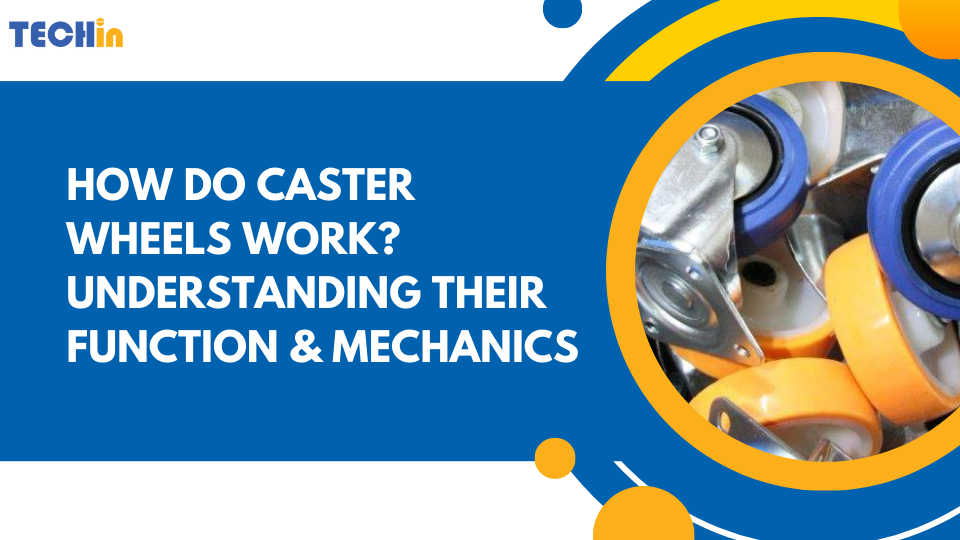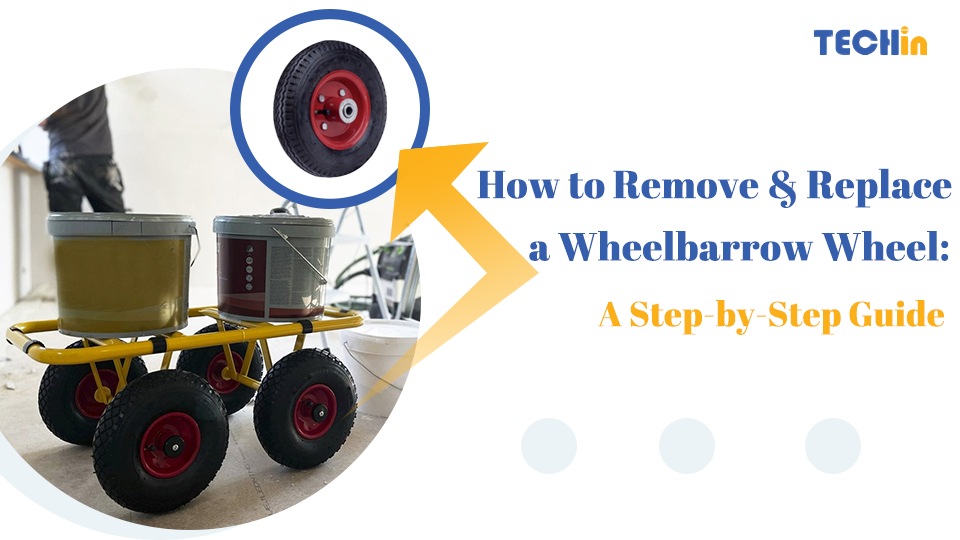If you choose the wrong casters, you could end up with costly downtime, equipment strain, and even safety risks. Whether you’re buying casters for industrial carts or commercial shelving, this guide breaks down how casters work—and what you need to know before you buy.
How Do Caster Wheels Work?
Casters consist of a small, undriven wheel mounted to a frame or bracket, called a rig. The rig may swivel 360° (for maneuverability) or remain fixed (for directional movement). Bearings allow the wheel to rotate smoothly, reducing friction and making it easier to move heavy loads.
Now, let’s go deeper into the essential knowledge every caster buyer should have.
What Are Caster Wheels?
Caster wheels are small, rolling components that attach to the bottom of furniture, machinery, carts, or other equipment. They enable smooth and controlled movement across surfaces. There are two main styles: swivel casters for full-range rotation and fixed casters for straight-line motion. They’re used in everything from home beds to warehouse carts, making movement easier and more efficient.
Working Mechanics of Caster Wheels
Caster wheels are small, pivoting wheels attached to the bottom of equipment, carts, furniture, or machinery to allow smooth and controlled movement. They come in a variety of types and sizes, but all function based on the same fundamental mechanics.
1. Basic Components
A typical caster wheel consists of:
- Wheel: Rolls directly on the surface
- Axle: Supports the wheel and distributes the load
- Fork/Rig: Holds the axle and connects to the mounting point
- Swivel Bearing (for swivel types): Allows the entire rig to rotate
- Mounting Plate/Stem: Attaches the caster to the object
2. How They Work
- Load Distribution: When an object is placed on casters, the weight is distributed across all wheels. The stronger the caster, the heavier the load it can support.
- Rolling Motion: As force is applied (pushing or pulling), the wheels roll along the floor, reducing friction and making it easier to move heavy objects.
- Swiveling Action (for swivel casters): The swivel bearing allows the fork and wheel to rotate horizontally, enabling direction changes without lifting or repositioning the object.
- Turning Radius: Swivel casters improve maneuverability by providing a smaller turning radius, ideal for tight spaces.
Types of Caster Wheels
By Movement:
- Swivel Casters: For agile movement and tight spaces
- Fixed (Rigid) Casters: For stability and directional control
- Swivel with Brake: Combines mobility with secure parking
By Common Material:
| Material | Best For |
|---|---|
| Rubber | Smooth indoor surfaces, quiet rolling |
| Polyurethane (PU) | Heavy loads, oil/chemical resistance |
| Nylon/Plastic | Light-duty, moisture environments |
| Steel/Cast Iron | Industrial settings, high heat or rough floors |
By Mounting:
- Top Plate: Flat, four-hole design — strongest and most common
- Bolt Hole/Threaded Stem: Compact, often for furniture or shelving
What Are Caster Wheels Used For?
Caster wheels are used wherever mobility is required—especially where items need to be moved frequently, repositioned, or adjusted for ergonomic efficiency.
🔍 Common Use Cases:
| Sector | Application |
|---|---|
| Healthcare | Hospital beds, IV stands, diagnostic equipment |
| Manufacturing | Machinery bases, mobile workstations, carts |
| Retail & Warehousing | Display racks, trolleys, pallet trucks |
| Offices | Chairs, filing cabinets, rolling storage |
| Hospitality | Food service carts, luggage racks |
| Construction | Scaffolding bases, tool carts |
By selecting the right caster, organizations can reduce downtime, minimize workplace injuries, and increase operational efficiency.
Benefits of Using Caster Wheels
✅ Key Advantages:
- Improved mobility: Easily move heavy or awkward equipment
- Labor efficiency: Minimize manual lifting and pushing
- Floor protection: Especially with rubber or polyurethane treads
- Compact design: Maintain aesthetics and functionality
- Adaptability: Various materials, sizes, and mounts for every use case
- Safety: Options include brakes, anti-static features, and shock absorbers
How Much Weight Can Caster Wheels Take? (How to Determine Load Capacity)
Caster wheels are categorized by their load-bearing capacity. Underestimating this can lead to failure, workplace accidents, or damage to expensive equipment.
🏋️ Weight Ratings (Per Wheel):
- Light-duty: Up to 75 kg
- Medium-duty: 76–140 kg
- Heavy-duty: 141 kg and above
- Extra heavy-duty: 300+ kg (including pneumatic or steel core casters)
⚖️ How to Calculate Total Load Capacity:
- Add the total weight of the object when fully loaded.
- Divide by the number of casters you’ll install.
- Add 30% as a safety margin.
Example: 600 kg trolley with 4 wheels
600 ÷ 4 = 150 kg per caster
150 + 30% = 195 kg minimum per wheel
For outdoor or uneven terrain, consider pneumatic or puncture-proof caster wheels.
Factors to Consider When Looking for Caster Wheels
Before buying, ask the following:
- What is the total load capacity needed?
- What type of floor will they roll on?
- Hard floors → soft wheels
- Soft floors → hard wheels
- Indoor or outdoor use? (weather resistance matters)
- Mounting method? Plate, stem, or bolt hole?
- How often will it be moved?
Frequent movement needs better bearings and shock absorption. - Do I need brakes or locks?
Tip: For hospitals, labs, and food service — prioritize noise reduction, hygiene, and floor protection.
Installation and Maintenance Tips for Caster Wheels
🔧 Installation:
- Ensure the base material is rigid (metal, hardwood, reinforced composite)
- Use high-grade bolts/screws for top plates
- For bolt hole or stem types, ensure a snug fit with the receiving socket
- Always install symmetrically to distribute weight evenly
🧰 Maintenance:
- Clean regularly (especially in hair-prone or dusty environments)
- Lubricate bearings every few months or per manufacturer guidance
- Check tightness of bolts and fittings
- Replace wheels that develop flat spots, cracks, or rust
Poor maintenance is one of the most common causes of caster failure—and it’s easily avoidable.
Common Issues with Caster Wheels
| Problem | Cause | Fix |
|---|---|---|
| Flat spots | Excessive static load | Rotate item or upgrade capacity |
| Noise | Lack of lubrication or material mismatch | Lubricate or change wheel type |
| Rust | Moisture exposure | Use stainless steel or zinc-coated options |
| Lock mechanism failure | Wear and tear | Replace or upgrade to a higher-quality brake system |
| Jammed swivel | Dirt in bearings | Clean or use sealed bearing models |
Final Thoughts
Caster wheels might seem like a small detail, but they’re critical to mobility, safety, and workflow efficiency in every industry. Whether you’re outfitting a fleet of factory carts or upgrading hospital equipment, choosing the right caster wheels is a decision worth getting right.
Now that you know how caster wheels work, what they’re made of, and how to choose them, you can buy confidently and avoid costly mistakes.








